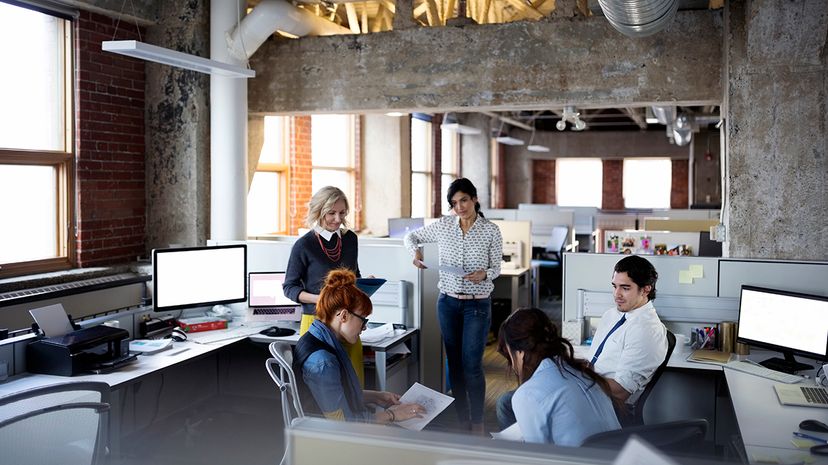 “Workers — particularly women — admitted they felt compelled to change the way they dressed and behaved as a direct result of the open-office environment. Hero Images/Getty Images
“Workers — particularly women — admitted they felt compelled to change the way they dressed and behaved as a direct result of the open-office environment. Hero Images/Getty Images
Raise your hand if you’ve ever been tempted to pass off your gym clothes as office-appropriate attire (raising both hands). If something stopped you from showing up to your 9 a.m. meeting in athleisure wear, then perhaps you work in an open-plan environment (or you’re a neurosurgeon or a park ranger. Or maybe nothing stopped you because you’re a fitness instructor, in which case … carry on).
According to a study published in the March 2018 journal Gender, Work and Organization, employees who spend their days in open-plan offices subconsciously act and dress differently than those who clock hours in less conspicuous environments.
Researchers analyzed the behavior of around 1,000 employees at a U.K. office over the course of three years. Originally, the workers were spread out in six separate departmental buildings, but eventually merged into a single shared office building that included open-plan offices and collective spaces, and a whole lot of transparent glass to "erode hierarchical and departmental boundaries and promote networking," according to a press release from Anglia Ruskin University in England.
Perhaps unsurprisingly, interviews with workers revealed that many people — particularly women — felt compelled to change the way they dressed and behaved as a direct result of the switch in environment. The constant visibility made many workers feel "exposed" in vulnerable situations, like when they felt emotional or received upsetting news.
Clothes and presentation played a big part in the behavior change as well. The research indicated that employees could identify more senior staff members solely by their "smart clothing and assertive gait," and the higher-ups were spotted moving around the open space more freely than lower-ranking employees who tended to stay in their own designated areas.
"When changing from a more closed, compartmentalised office space to a new open-plan, transparent and fluid working space, office workers were more conscious of their visibility and often found this unsettling rather than liberating," lead author Dr. Alison Hirst said in a press statement. "Women in particularly felt anxious about the idea of being constantly watched, and felt they had to dress in a certain way."
There is, however, a silver lining to all this appearance-focused fuss. Researchers found that the more democratic division of space inspired some employees to embrace new sides of their work personas and consider their daily experience to be more egalitarian. "There was also evidence that workers felt more equal as everybody was more approachable in an open space," Hirst said. "It was also seen by some as a chance to dress more smartly and fulfil a new identity."
Now That’s Interesting
Cubicles were a 1950s innovation that dominated typical office environments of the era. But things started to change in 1964 when the Herman Miller furniture company introduced its "Action Office" system, which included larger surfaces and multiple desk heights. Supposedly, as the trend of open-plan offices caught on, the creators of the concept expressed regret; Herman Miller designer Robert Propst called the trend "monolithic insanity."
































